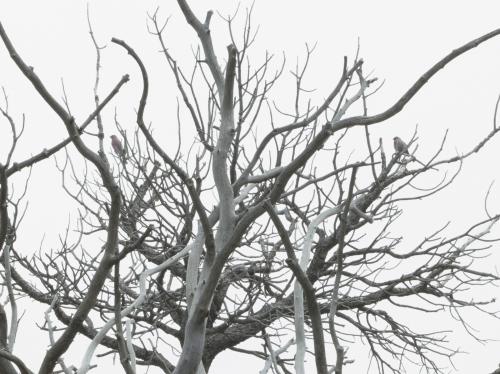NMSU Art Museum joins 14 institutions to host events about climate change


Artists from Las Cruces to Albuquerque hope to draw attention to a biological crisis happening along the Rio Grande with an exhibit titled “Species in Peril Along the Rio Grande.”
Subhankar Banerjee, New Mexico State University alumnus and University of New Mexico professor of art and ecology, curated the exhibit at 516 Arts, which reached out to enlist other institutions including the Albuquerque Museum and NMSU’s Art Museum.
The result is a series of local events in October and November intended to bring recognition to issues of regional climate change. Events include a city proclamation, an extinct species workshop, a retablos workshop, a mural, a film screening and a lecture.
“City Councilor Kasandra Gandara, City of Las Cruces, was the first councilor to get on board for a proclamation on Nov. 4, at 1 p.m., in City Council Chambers, that will recognize the month of November as ‘Species In Peril Along The Rio Grande Awareness Month,’” said Marisa Sage, director of the University Art Museum at NMSU. “This proclamation recognizes a month long commitment and collaboration between various entities that encourages all citizens to take part in bringing awareness and reducing the devastating effects of climate change and species extinction in our region.”
The upcoming events in Las Cruces are free and open to the public.
On Saturday, Oct. 26, the University Art Museum at NMSU and Southwest Environmental Center will host a “Dia de los Muertos Extinct Species Workshop” from 12-2 p.m. at Devasthali Hall, Room 106. The new Department of Art facility is located at 1308 E. University Avenue near the intersection of University and Solano. Visitors of all ages are invited to create altar pieces and retablos that pay homage to and recognize the extinct and endangered species along the Rio Grande. The works will reference the traditional style of Mexican Retablo ex-voto paintings with paint and collage on tin that memorialize “Species in Peril Along the Rio Grande.”
On Friday, Nov. 1 through Sunday, Nov. 3, artwork created during the Dia de los Muertos Workshop event at NMSU’s Devasthali Hall will be presented as one large altar during the Old Mesilla Dia de los Muertos celebration at Mesilla Plaza, 2170 Calle De Parian.
On Monday, Nov. 4, Las Cruces Mayor Ken Miyagishima will deliver a proclamation at 1 p.m. at City Council Chambers at Las Cruces City Hall declaring November “Species In Peril Along The Rio Grande Awareness Month.”
On Tuesday, Nov. 12, NMSU’s Creative Media Institute and Southwest Environmental Center will host a screening of the film “Call of Life: Facing the Mass Extinction.” The film is the first feature documentary to investigate the growing threat to Earth’s life support systems from this unprecedented loss of biodiversity. Through interviews with leading scientists, psychologists, anthropologists, philosophers and indigenous and religious leaders, the film explores the causes, the scope and the potential effects of mass extinction. The film begins at 7 p.m. in the Creative Media Institute Theatre inside Milton Hall.
On Wednesday, Nov. 20, Banerjee will give a lecture titled “Multispecies Justice in the Age of Biological Annihilation & Climate Breakdown.” Banerjee’s talk is part of the ongoing NMSU Climate Change Education Seminar Series. Banerjee will discuss his role as a co-curator of the exhibition “Species in Peril Along the Rio Grande” and campaigns for multispecies justice and his recent research on the global biological crisis.
The “By the Dam” community mural is underway by local artists commissioned by Cruces Creatives at 205 E. Lohman and will be completed by Nov. 30. The mural created by Raquel Madrigal and Henry Hartig, features the irrigation ditches of Las Cruces, water-flow and the disappearing fish of the Rio Grande. It is created as part of Art/Agriculture/Environment, an exhibition of local artists focusing on sustainable farming practices in communities and their positive effects on the environment.
The University Art Museum is among more than 14 collaborating institutions, which include partnerships with artists, scientists, directors and curators on both sides of the border.


